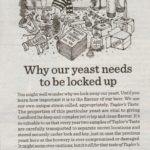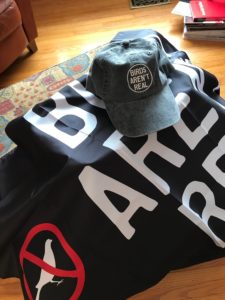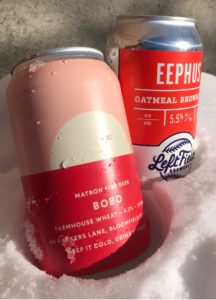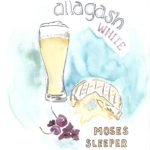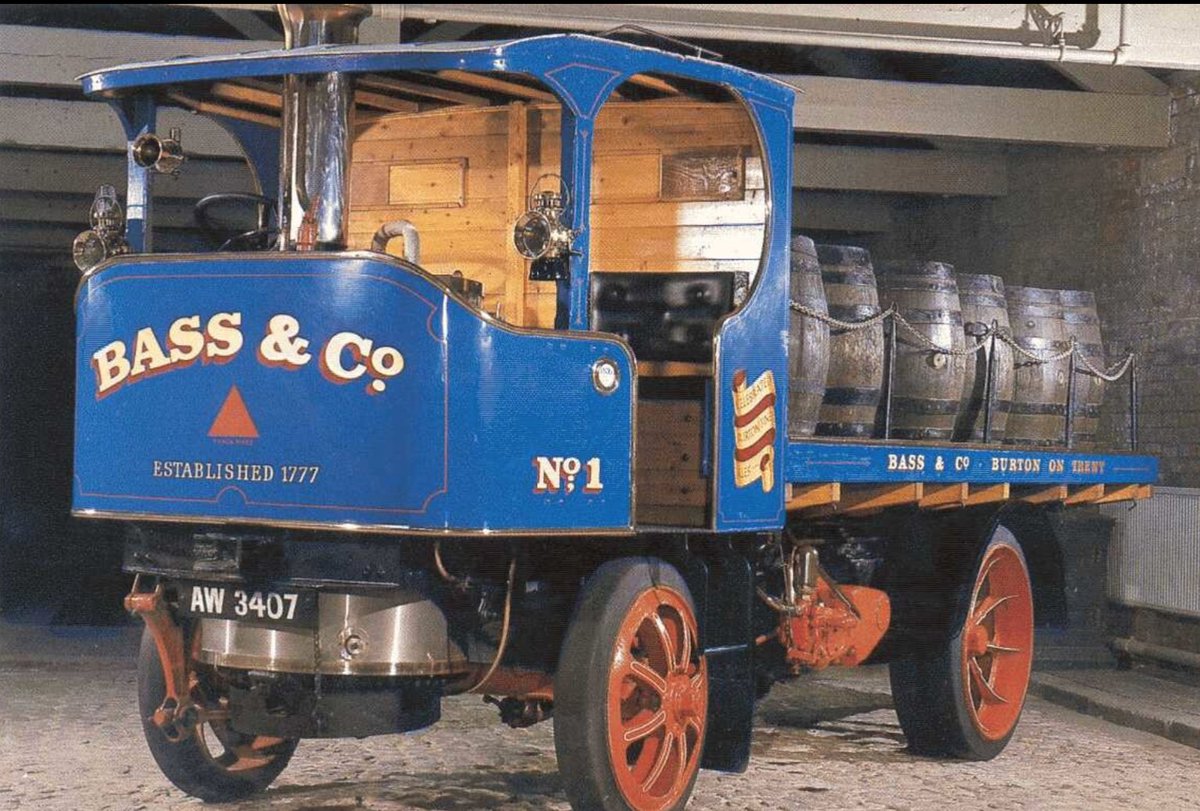It’s been a quiet week on the beer front. These things happen. So quiet that Stan as well as Boak and Bailey took the week off. Lollygaggers!!! On the home front… I sneezed. Twelve days into the post-op… schnozzle post-op. And nothing snapped when I went all great white whale . No Penge Bungalow murders splatter. No new Jackson Pollack there by the sofa. I should stop now. Sorry for being gross. But suffice it to say that it was wonderful. Limited use for strong drink these days but the timing of all of this coming before lounging in the garden begins is heartening.
What was out there in the bierlandts this week to read and write about? Keystone trial post-op? Molson Coors says “a surprise to many in the industry, although perhaps not a surprise to the layperson.” More importantly, the jury said that there was no willfulness in the trademark infringement. No great anti-old-craft master plan. How deflating of the narrative. And a great way to top out at around 25% of the damages you claim at court.
In another beer-related legal story, we read this week about how the Orthodox Christian community of St. Paul’s Foundation and the Shrine of St. Nicholas the Wonderworker, Patron of Sailors, Brewers and Repentant Thieves located in Marblehead, Mass., were granted the permit to redevelop the property on which their shrine is located but were refused one key element, at least on an interim basis:
…the third area was supposed to be a fellowship hall, which was intended to be where the monks would serve the beer they brewed. Each element of the project was given a different use code, which carried different occupancy and safety requirements. The monks couldn’t start serving their beer until the project was completed and they obtained an occupancy certificate. Before the project was complete, Marblehead building commissioner Richard Baldacci told the monks they had to stop serving beer on the premises without an occupancy certificate.
The community sued over the loss of revenues but they lost their case, the court finding that the lack of an architect working on that part of the project meant there was no ability to issue the permit. No architect, no signoff that all is in order. Seems reasonable.
I liked Ed’s tale of a trip to Haworth, home to the Brontës and a few miles from the Timothy Taylor brewery at Keighley:
The journey up north was more arduous than expected so on arrival I was in need of something to lift my spirits and refresh me. Particularly something that comes in pint sized measures. So when some of my mates headed out to a hotel bar for some food I tagged along confident that no self respecting bar in Haworth wouldn’t have Landlord on. When I saw the pump clip proudly displayed I thought I could start to hear angels singing, but it was probably just tinnitus as the beer was bleedin’ well on the turn. This would not do. So when we headed back to the hostel I knew I wouldn’t be stopping long, I had unfinished business.
Matt made a very interesting observation in a tweet written in response to Jeff who wrote at Beervana about the use of “crispy” to describe certain lagers. I am happy to separate the two given Jeff’s preamble to his bit but I would not want to lose this:
Beer writers policing language that becomes part of a drinkers vernacular—especially in this case a younger drinker—is why beer writing consistently fails to cross over into the public domain. Keep calling your beers crispy if you want to.
While I agree that policing is fundamentally silly there is possibly an underlying question: is there any meaningful standard upon which the self-appointed might do such a thing? For the best part of twenty years doing this, I am left with the impression that too much of what has been written about good beer has been larded with a sameness made up of business promotion, recycling of the works of others, forms of oversimplification** mixed with claims to expertise and a certain code compliance. Is “crispy” an example of that code? Maybe. I don’t have an exact idea what is meant when used. But it’s not unique in that regard. And I’m not sure that is the point. It seems that circles of praise gather whenever someone achieves the great gold ring of getting paid for their written code compliant words, as if that is the main end of beer writing.*** Maybe for some that’s enough. There is, sadly, even a bit of a surprise when you come across something refreshingly well done, like the experience last week of reading the short vignette by Holly Regan. Policing the vernacular? Sure… yes, something to avoid – but perhaps part of a bigger reconsideration of how good beer culture imposes limits on itself.
Elsewhere and otherwise, various news outlets in Chicago have reported on the change of pouring rights deal for the White Sox that sees macro brewer ABInBev’s Goose Island brands removed and replaced by the brands of Molson Coors. As far as the fan experience goes…
Many Sox fans were wondering about the status of the Craft Kave, the bar and restaurant under the right field bleachers that offers field-level views through the opposing team’s bullpen. While that area will be renamed the Leinenkugel’s Craft Lodge, a White Sox spokesperson assures that the beer selection — which has included brews from independent makers from all over the city and Northwest Indiana — will not be affected. Fans can expect the coolers to remain stocked with a wide variety of suds.
I had hoped to find a value for the five year deal to contextualize the law suit damages. Stadium naming rights went for over $20 million in 2003. Having participated in such matters at a minor league level, it is very interesting to see how the bigs manage these things.
On a smaller scale, this story about one British establishment‘s goal of maintaining an up market approach is interesting but particularly in relation to the little used and poorly designed parking for persons with disability nearby:
“The car park on the side of Dovecot is rarely used and when it is used if somebody actually parks in bay four everybody has to reverse out the car park to get past them because it’s too small to actually turn around which has been creating some problems. So we have spoken to the council about it because our long-term plans are to put a summer house on there, like a big conservatory with a cocktail bar in the back… There are plenty of parking spaces that aren’t getting used, there are eight at the side of Eliano’s which is within 10 yards and there are another six in Baker and Bedford Street and they are barely used.”
It seems to pit people with mobility requirements against the cocktail drinking classes but you wonder if there has been a technological change or at least a local transit shift that makes these spaces something of a stranded asset. Speaking of change, as part of wandering the globe for these notes every week, it’s interesting to see how other parts of the world frame their drinking cultures. Consider this bit of demographics from The Times of India which may indicate that there is a generational beer blip there, too:
…even though India is known as a whisky nation, it’s the wine and beer that are gaining popularity in recent days. Only 16 per cent of urban Indians prefers to call it their favourite drink, whereas 24 per cent of the respondents called beer their favourite drink, while wine was favourited by 22 per cent of the people… India is the largest consumer of whisky in the world, about three times higher than the US, which is the second-largest consumer. The findings showed that whisky continues to remain a popular choice among Indian males. However, it’s the young adults (Gen Z) or the millennials who prefer to have wine over anything else. While Gen X love their beer.
 In addition to sharing the wonderful but unrelated photo to the right (mainly included here for the trews), Gary has posted some thoughts on the meaning of the English ale category “AK” which, while I am never one for a firm conclusion, does cover the subject broadly and points us all in this interesting direction:
In addition to sharing the wonderful but unrelated photo to the right (mainly included here for the trews), Gary has posted some thoughts on the meaning of the English ale category “AK” which, while I am never one for a firm conclusion, does cover the subject broadly and points us all in this interesting direction:
Reviewing dozens further of brewers’ ads in BNA in the latter 1800s, when AK was at an ascendancy, it appears “keeping” had a specific sense in the market. The term did not – in trade ads to the public – denote conditioning of beer at the brewery. Rather, it referred to how long the beer would last in consumer hands and specifically, whether in summer. Often, the ads tout March or April brewings as having the necessary quality. Further, while typically this quality was associated with pale ales, even mild ales sometimes were described as keepable.
Finally, Pete Brown wrote about the TV show Ted Lasso for Pellicle including a consideration of the pub that is one of the show’s settings starting in 2020. I liked the show myself – but I take it as a light examination of America by removing the nice American from America and placing him essentially in the handy self-sufficient pre-existing alternative reality of Britain. Season three better be less self-indulgent or I’ll be rooting for Nathan. Still, as with drinking in New York, just the whole “take your pint and stand on the sidewalk outside” stuff is still tantalizing exotic for any bland English Canadian like me.
If I have my watch set correctly, you may now return to checking out the updates from Boak and Bailey mostly every Saturday and from Stan every Monday, plus more with the weekly Beer Ladies Podcast, and at the weekly OCBG Podcast on Tuesday and sometimes on a Friday posts at The Fizz as well. There is a monthly sort of round up at The Glass. (Ed.: that seems to be dead now.) There is more from DaftAboutCraft‘s podcast, too. And the Beervana podcast. And sign up for Katie’s irregular newsletter, The Gulp, too. And check out the Atlantic Canada Beer Blog‘s weekly roundup. Plus follow the venerable Full Pint podcast. And Fermentation Radio with Emma Inch. The AfroBeerChick podcast as well! And also look at Brewsround and Cabin Fever. And Ben has his own podcast, Beer and Badword (Ed.: …notice of revival of which has been given…) And remember BeerEdge, too, and The Moon Under Water.
*…as illustrated…
**…such as…
***Perhaps the opposite of crab bucketing… or at least what the ones who stay put down in the budget say to each other. Song!




